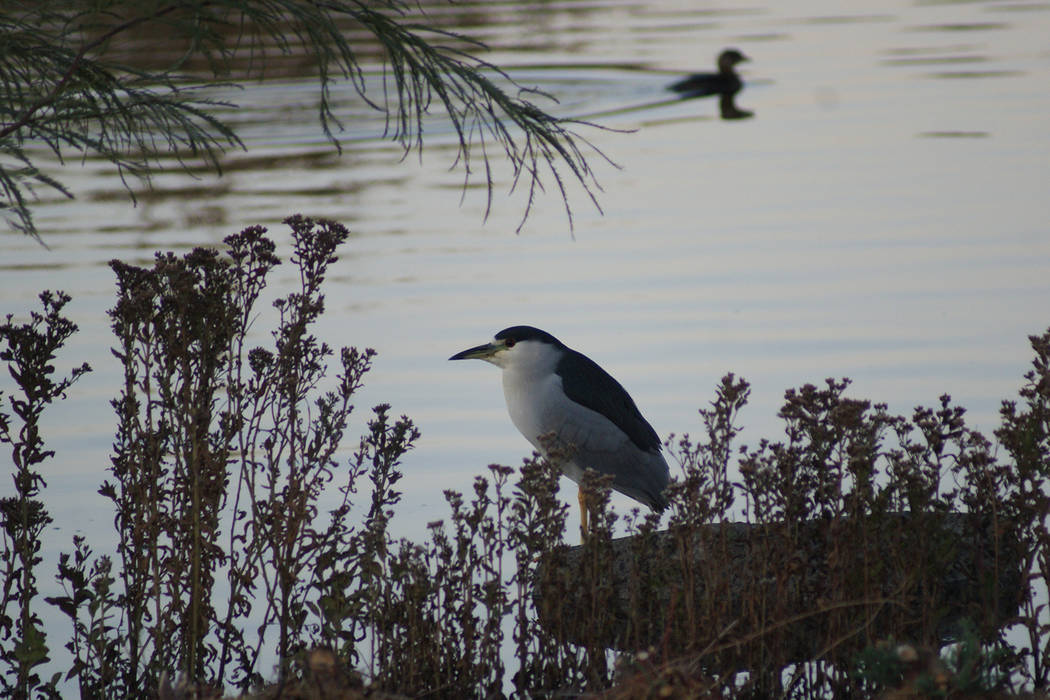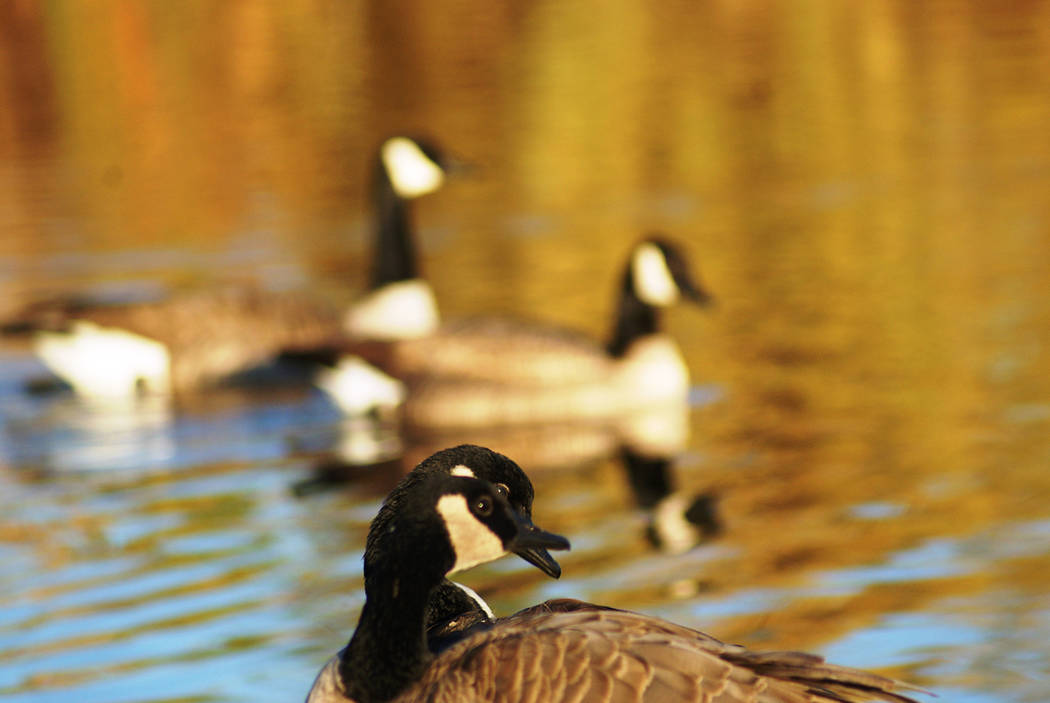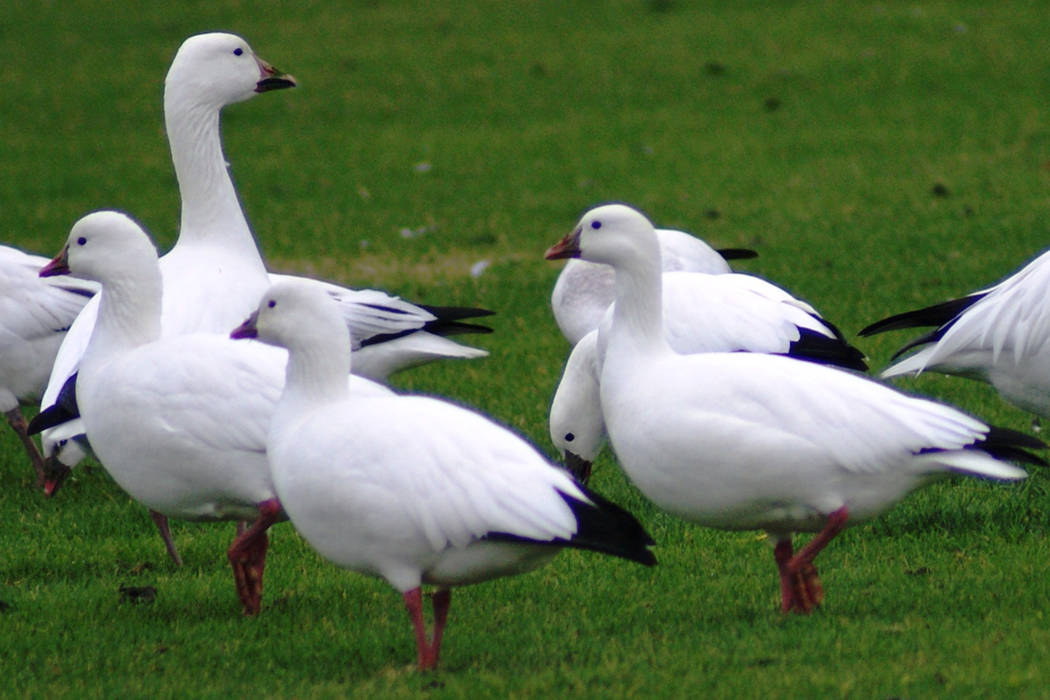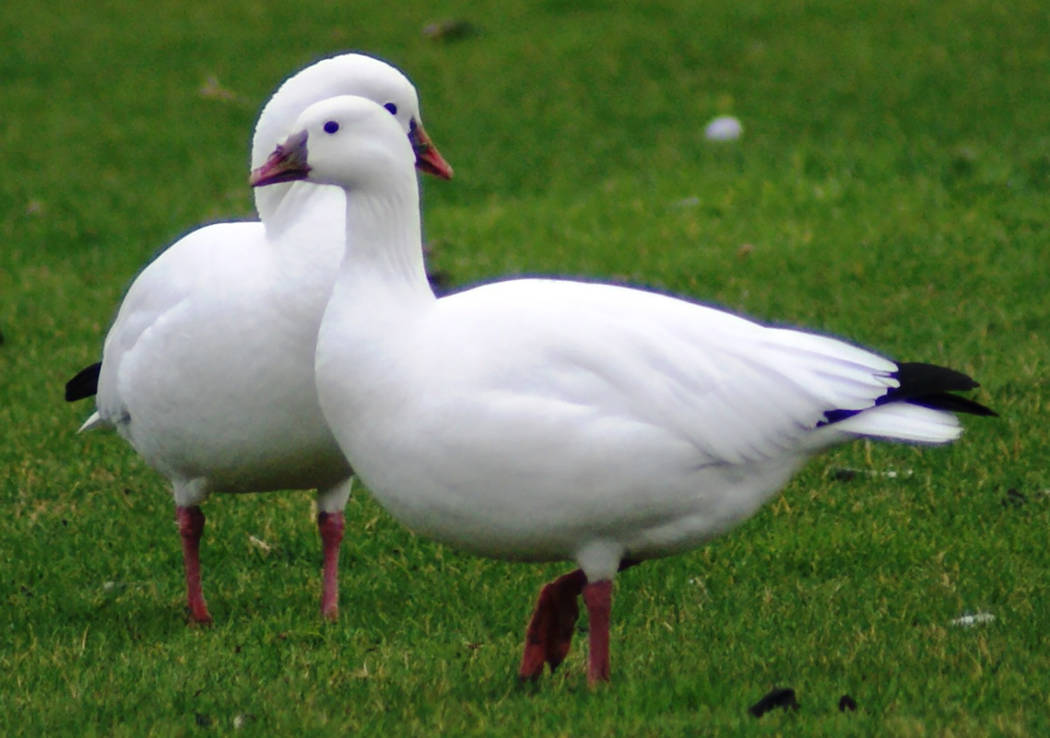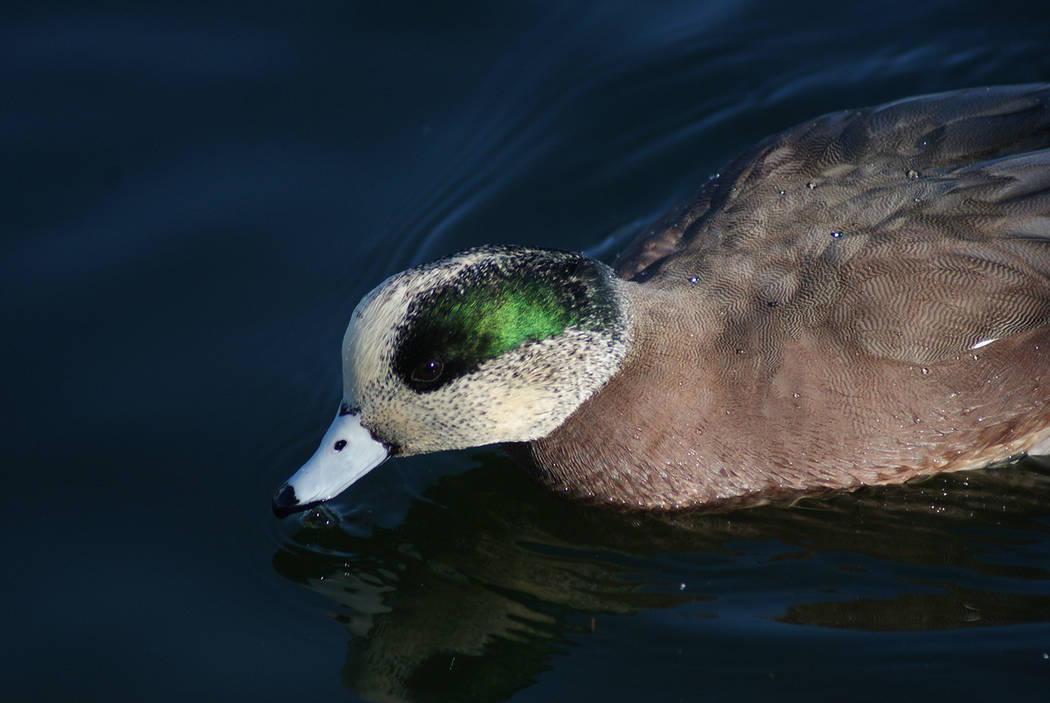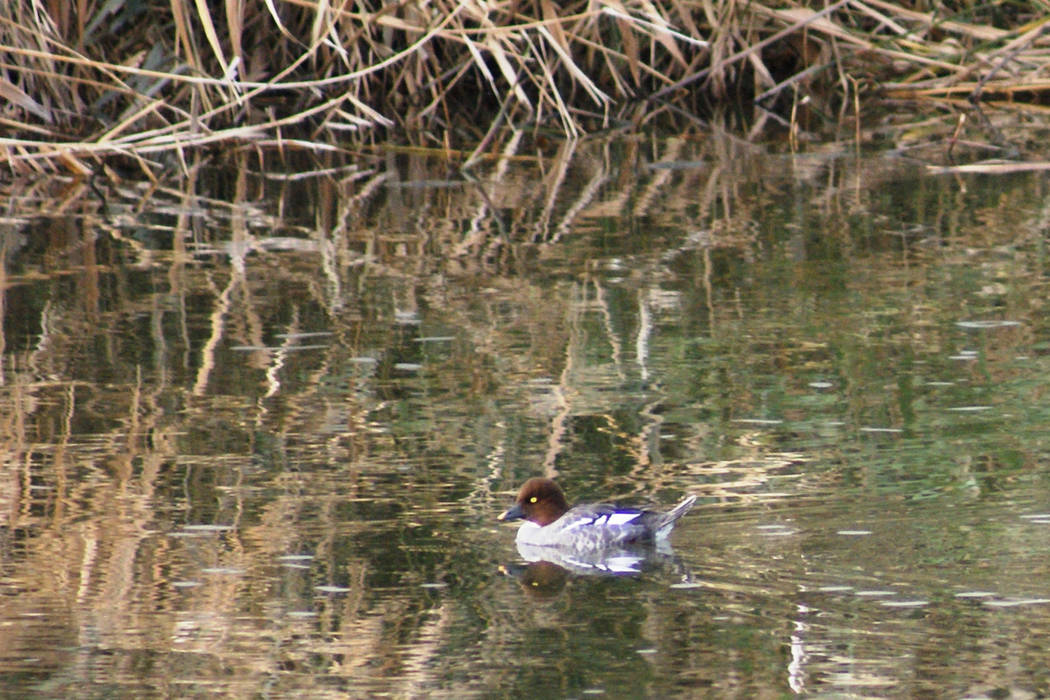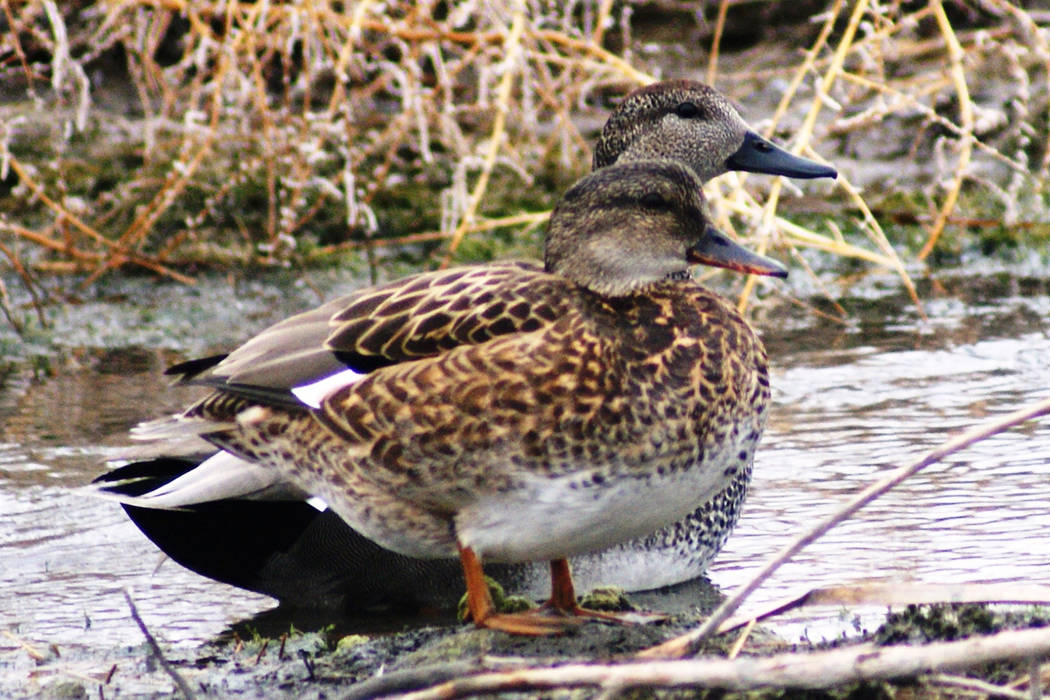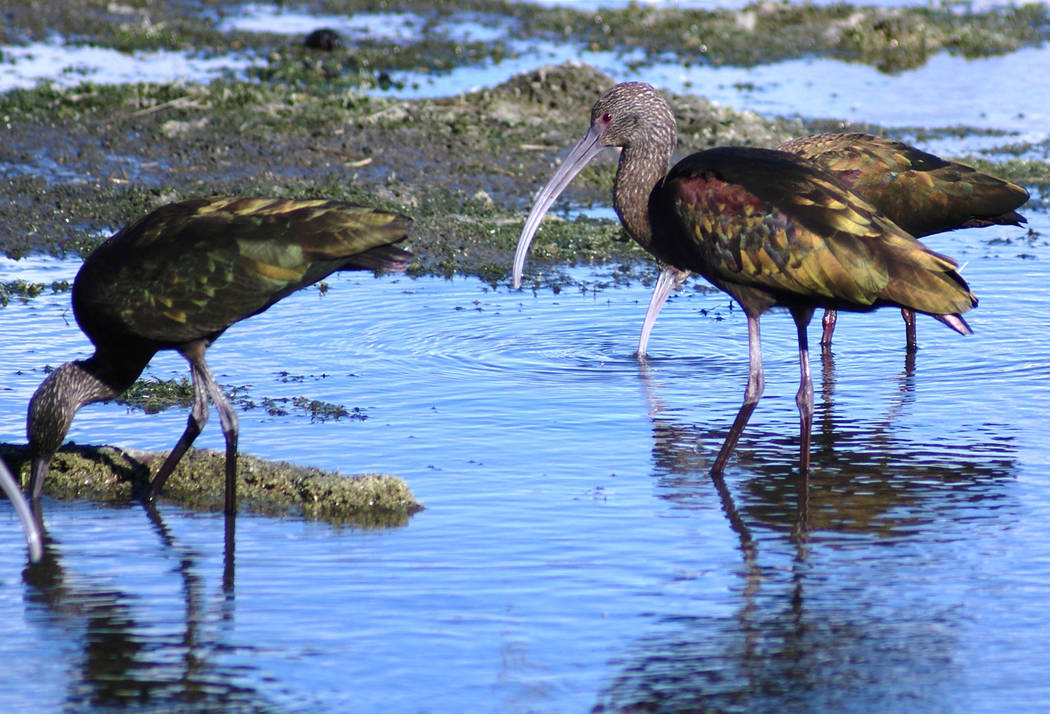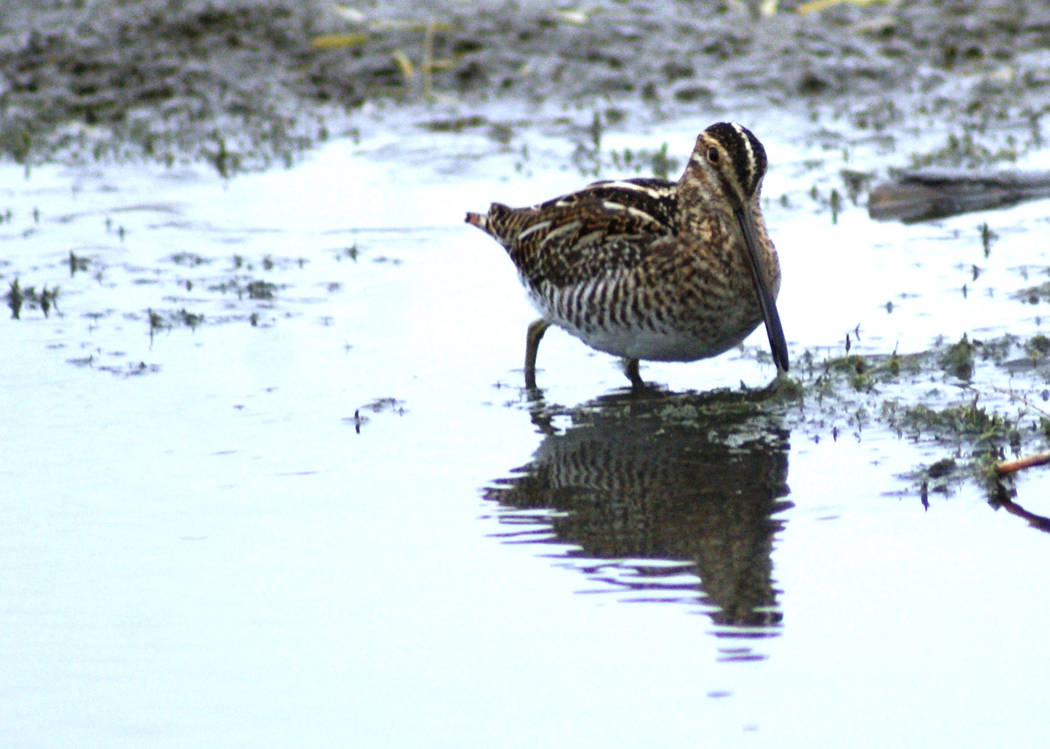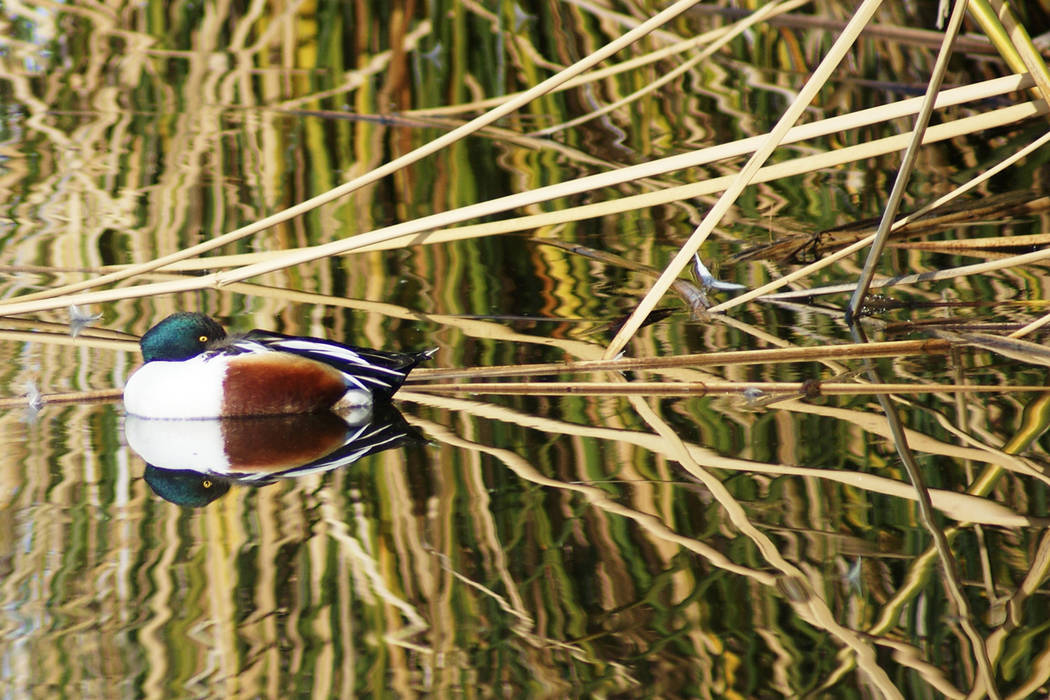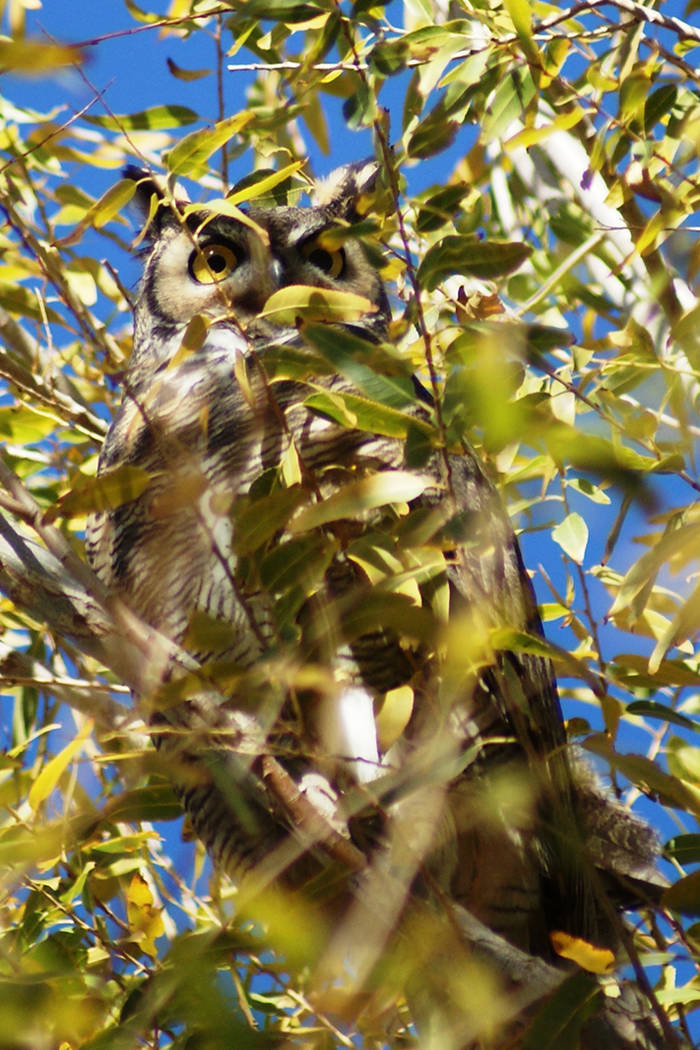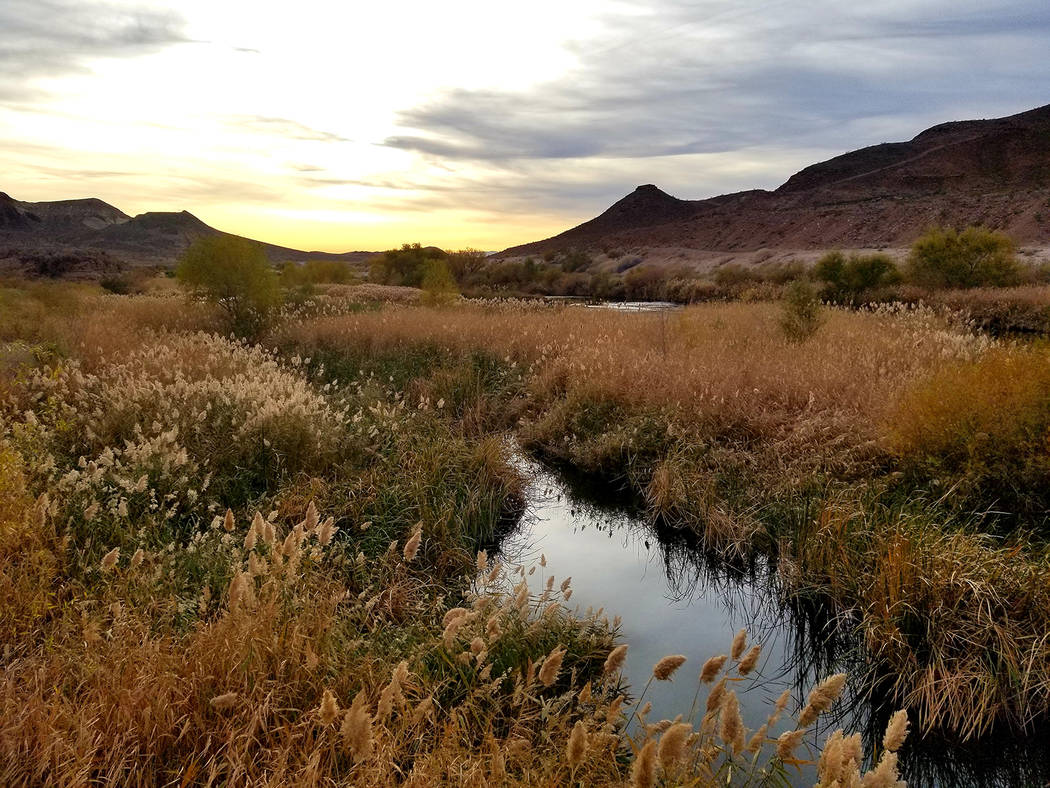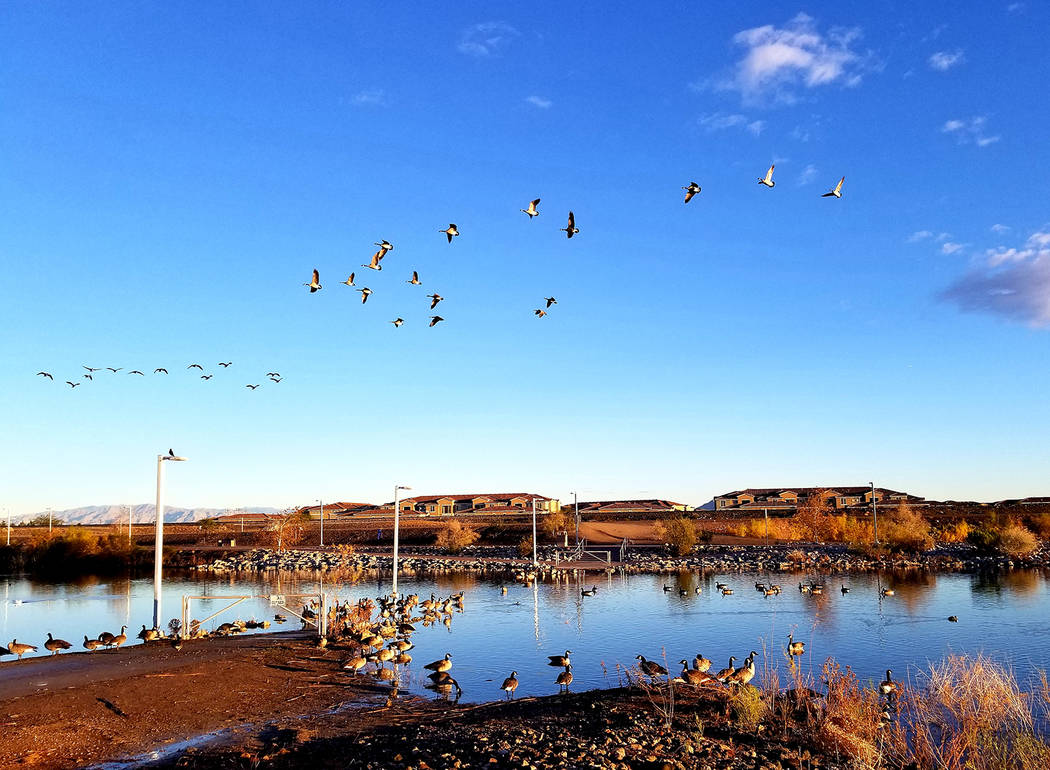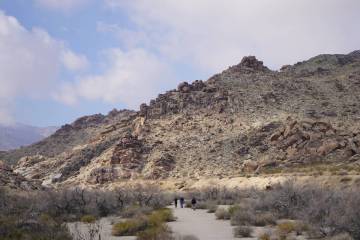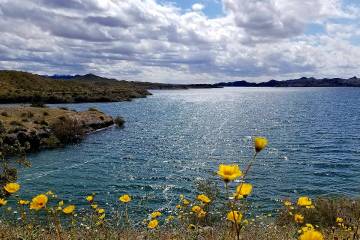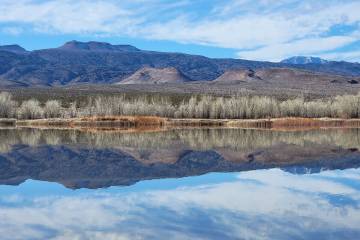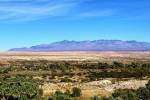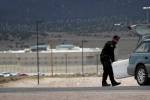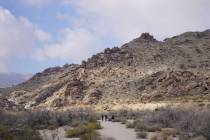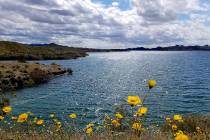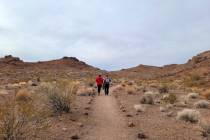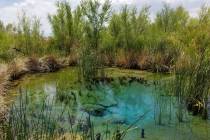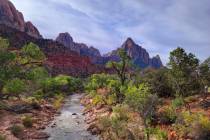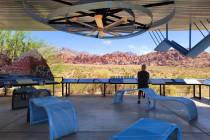Henderson area teems with winged visitors from north
Our wintry world looks extra feathery in Southern Nevada through a pair of binoculars. Those feathers belong to snowbirds, winged critters that have flown on their own hundreds of miles to bask in warmer climes, some from as far away as the Arctic. Their visits coincide with those of Canadians also flocking here by plane, car and RV to escape winter’s freeze.
Within 10 miles of my Henderson home are five excellent spots to see wintering waterfowl: Henderson Bird Viewing Preserve, Sunset Park, Cornerstone Park, Clark County Wetlands Park’s Nature Preserve and a string of stops along the Las Vegas Wash via East Galleria Drive.
About 900 big-beaked northern shovelers, sometimes swimming in large swirling circles, can be seen feeding on fallen seeds and anything else nutritious at Henderson’s bird preserve. Collections of colorful waterfowl like American wigeons, mallards and redheads gather 5 feet away from visitors at Sunset Park pond’s shoreline. At Cornerstone Park, the morning routines of dozens of Canada geese are a daily treat of sight and sound as they prepare to take off for a few hours to find food. Gadwalls, ring-necked ducks and American coots are easily seen in December and early January at Clark County Wetlands Park’s nature preserve. Less-visited spots along the Las Vegas Wash can yield glimpses of common goldeneyes, buffleheads and cinnamon teals.
In early January, a bonus winter bird sighting came at the soccer fields across from the Sam Boyd Stadium complex, where a baker’s dozen snow and Ross’s geese nibbled on the turf. These snow-white birds fly from Arctic regions to winter in warmer climates before returning north in spring to nest.
Doug Chang, president of Red Rock Audubon Society, called winter the best time to go birding in the Las Vegas Valley and encouraged more people to flock to “hidden gems” on the east side. Chang pointed out the easy accessibility of Sunset Park, Henderson’s bird viewing preserve, Wetlands Park and Cornerstone Park. All have paved and packed dirt trails. Golf-cart tours are offered at the bird viewing preserve and, less frequently, at Wetlands. “Our short winter months are sunny, mild and calm, making for a very pleasant outdoor experience,” Chang said.
Wintering birds, generally here from November to March, join resident birds making Southern Nevada home throughout the year. Those include Gambel’s quail, greater roadrunner, Crissal thrasher, black-tailed gnatcatcher, Phainopepla and Verdin. The easiest “snowbirds” to spot in winter are ducks and geese, but the season also brings extra American pipits, white-crowned sparrows, black-crowned night herons, white-faced ibis and ruby-crowned kinglets. There’s typically a boost in the populations of herons and raptors as well, so it’s easier to see great blue herons, snowy egrets and red-tailed hawks. A bald eagle was even seen recently along the Las Vegas Wash. The Henderson Christmas Bird Count took place on Dec. 18, and Chang said volunteers counted more than 100 species of birds that day.
Even for those who lack a desire to identify and memorize differences among gadwalls, ring-necked ducks and American wigeons, Southern Nevada’s snowbirds offer extra color and added beauty to any winter stroll. Here are links and general information about the birding “hotspots” listed above:
Henderson Bird Viewing Preserve, at 350 E. Galleria Drive east of Boulder Highway, has nine accessible ponds of reclaimed water that attract wintering, migrating and resident birds. “Snowbirds” number in the thousands every winter, making it the best spot to see the largest numbers of ducks. Lucky bird: an uncommon peregrine falcon soaring overhead in early January. Be ready to do a lot of walking through this important bird resting spot along the Pacific Migratory Flyway. Golf cart tours are available (check for times), as are a limited number of binoculars to borrow.
Sunset Park’s 14-acre pond, stocked with trout and catfish for anglers, draws hundreds of ducks, geese, grebes and double-crested cormorants. Great up-close views help beginning birders distinguish differences among duck species. Lucky bird: a rare Pacific Loon fishing there in late November. Binoculars are not a necessity at this busy park because the waterfowl swim close to the shoreline in search of the food they should not have: bread, popcorn and other nutritiously disastrous human snacks. The park is at Sunset Road and Eastern Avenue.
Cornerstone Park has as its centerpiece a 31-acre lake at 1600 W. Wigwam Road just west of Stephanie Street. The lake, in an old gravel pit where water quality remains questionable in part because of storm runoff, is a favorite home for Canada geese, ruddy ducks, mallards, redheads, coots and grebes. Cormorants and herons are regulars, although not in large numbers. Lucky bird: an elegant Western grebe floating and resting in December.
Clark County Wetlands Park’s nature preserve has cottonwoods, ponds and the quick-flowing Las Vegas Wash within a 210-arce shelter set aside for birds, bunnies, beavers, coyotes and other animals. From the “Big Bridge” over January’s extra-high Las Vegas Wash waters, 40 ring-necked ducks, a couple of dozen coots and a few gadwalls were visible during a recent visit. Song sparrows and marsh wrens were foraging in reeds, debris and trash brought by December rainwater through flood channels. Tall cottonwoods elsewhere in the nature preserve provided perches for a great horned owl and a red-shouldered hawk. Lucky bird: Wilson’s snipe, an uncommon shorebird, feeding with its extra-long beak in a channel parallel to Wetlands Drive, where nine white-faced ibis were also feeding. Wetlands Nature Preserve is at the east end of Tropicana Avenue.
Views of the Las Vegas Wash are made possible by a string of stops along Galleria Drive heading east toward Lake Las Vegas, and they provide quieter alternatives for birding and walking. Stops include Pabco and Wells trailheads as well as Terrazza Park and Powerline Crossing. Bird’s-eye views of the wash (an urban river that carries 180 million gallons toward Lake Mead every day) and walks along reedy shoreline areas allowed recent glimpses of great blue heron, bufflehead, cinnamon teal, mallards, Gadwall, coots, great egret, red-tailed hawk and belted kingfisher. Lucky bird: Common goldeneyes seen in late December between Wells Trailhead and Terrazza Park.
Natalie Burt, a former news reporter at the Review-Journal for 11 years, spends as much of her free time as possible enjoying Southern Nevada’s outdoors. She’s now a teacher and has lived in Henderson for 18 years. Email: nvburt@gmail.com.




